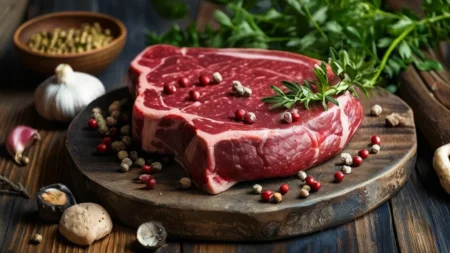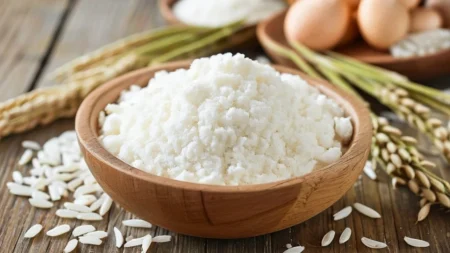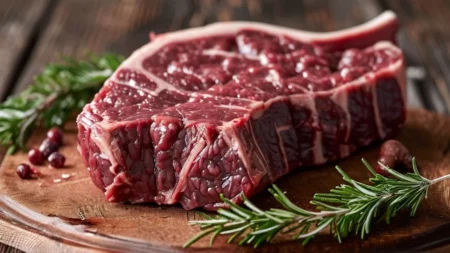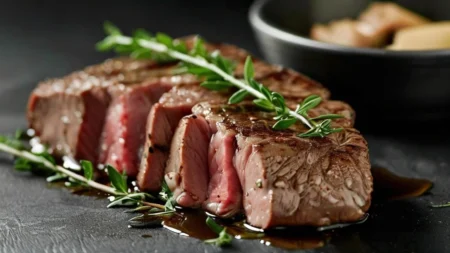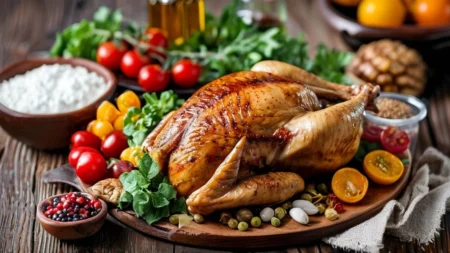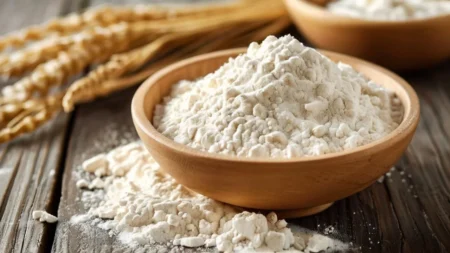Beef Tenderloin: Nutrition, Benefits, and Culinary Use
Key Takeaways:
- Beef tenderloin is a premium cut known for its tenderness and rich flavor.
- It is a good source of high-quality protein, vitamins, and minerals.
- This cut is versatile in cooking, ideal for roasting, grilling, and pan-searing.
- Understanding how to properly prepare and cook beef tenderloin enhances its flavor and texture.
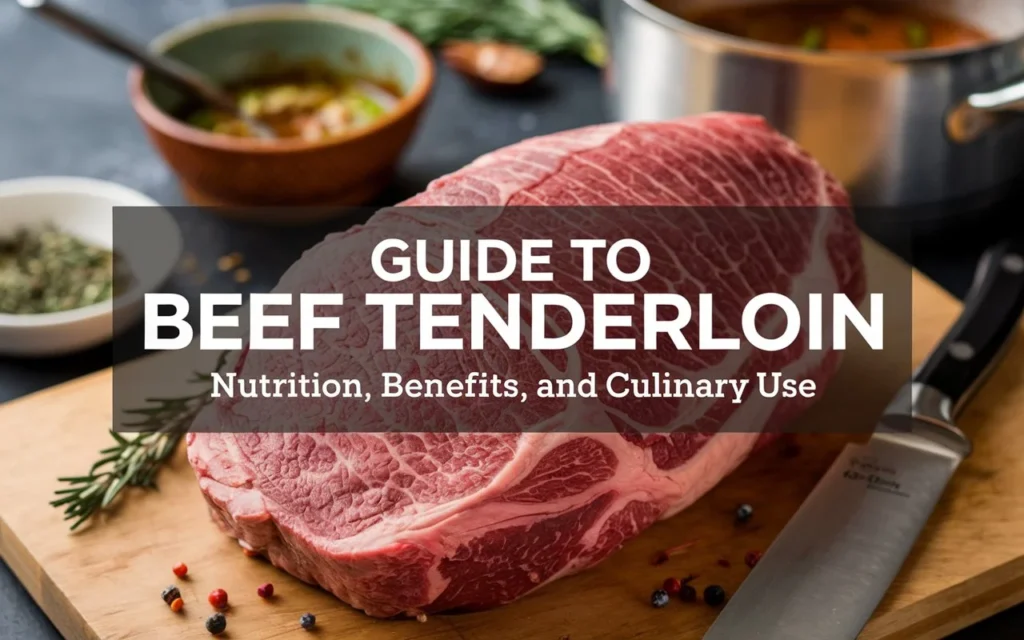
Beef Tenderloin: A Premium Cut of Meat
Beef tenderloin is one of the most sought-after cuts of beef, prized for its tenderness and subtle flavor. Located along the spine, this cut is relatively lean with minimal fat marbling. Here’s a closer look at the nutritional profile of a 3-ounce (85-gram) serving of cooked beef tenderloin:
Nutritional Breakdown per 3 Ounces (85 grams)
| Nutrient | Amount |
|---|---|
| Calories | 180 kcal |
| Protein | 23 grams |
| Fat | 9 grams |
| Saturated Fat | 3.5 grams |
| Carbohydrates | 0 grams |
| Iron | 2.1 mg (12% DV) |
| Zinc | 4.0 mg (27% DV) |
| Vitamin B12 | 1.8 mcg (30% DV) |
Health Benefits of Beef Tenderloin
Beef tenderloin is not only delicious but also provides several health benefits due to its rich nutrient content:
1. High-Quality Protein
Beef tenderloin is an excellent source of high-quality protein, essential for muscle growth, repair, and overall bodily functions. Protein from animal sources contains all the essential amino acids needed by the body.
2. Iron Content
The iron in beef tenderloin is heme iron, which is more easily absorbed by the body compared to non-heme iron found in plant foods. Iron is crucial for producing red blood cells and preventing anemia.
3. Vitamin B12
Beef tenderloin is rich in vitamin B12, which plays a vital role in maintaining healthy nerve cells, producing DNA, and preventing certain types of anemia.
Cooking and Preparing Beef Tenderloin
Beef tenderloin is renowned for its versatility in the kitchen. Here’s how to prepare and cook this cut to perfection:
1. Selecting and Preparing Beef Tenderloin
When purchasing beef tenderloin, look for a cut that is firm, with a deep red color and minimal fat. Trim any excess fat and silver skin before cooking.
2. Cooking Methods
- Roasting: Preheat your oven to 425°F (220°C). Season the tenderloin with salt, pepper, and any desired herbs. Roast for about 20-25 minutes for medium-rare, or until the internal temperature reaches 135°F (57°C). Let it rest for 10 minutes before slicing.
- Grilling: Preheat the grill to medium-high heat. Season the beef and grill for about 4-5 minutes per side for medium-rare. Use a meat thermometer to ensure the internal temperature reaches 135°F (57°C). Let it rest before serving.
- Pan-Searing: Heat a skillet over medium-high heat with a small amount of oil. Sear the tenderloin for 3-4 minutes per side until a brown crust forms. Transfer to the oven to finish cooking if needed, until the desired doneness is achieved.
3. Recommended Seasonings and Marinades
Simple seasonings like salt, pepper, garlic, and rosemary enhance the natural flavor of beef tenderloin. For a more complex flavor, consider marinating the beef in a mixture of soy sauce, balsamic vinegar, and Dijon mustard.
Beef Tenderloin in Different Cuisines
Beef tenderloin is versatile and can be used in various culinary traditions:
1. American Cuisine
In American cuisine, beef tenderloin is often served as a steak or roast. Classic preparations include filet mignon and beef Wellington, where the tenderloin is wrapped in puff pastry.
2. European Cuisine
European dishes feature beef tenderloin in a range of styles. For example, French cuisine includes beef tenderloin in dishes like steak au poivre, while Italian cuisine might feature it in a rich red wine sauce.
3. Asian Cuisine
In Asian cuisine, beef tenderloin is used in stir-fries and grilled dishes, often marinated in soy sauce and garlic, then served with vegetables and rice.
Nutritional Considerations and Moderation
While beef tenderloin is nutritious, it’s important to consume it in moderation due to its saturated fat content. Balancing your diet with a variety of proteins, including plant-based options, helps maintain overall health.
1. Moderation and Portion Control
Aim to include beef tenderloin in your diet no more than a few times a week. Pay attention to portion sizes, and complement your meals with vegetables, whole grains, and healthy fats.
2. Healthier Cooking Techniques
Opt for grilling or roasting over frying to reduce added fats. Trim excess fat before cooking to minimize saturated fat intake.
Conclusion
Beef tenderloin is a luxurious and nutritious cut of beef that provides high-quality protein, essential vitamins, and minerals. Its tenderness and flavor make it a favorite in various culinary traditions. By using proper preparation and cooking techniques, you can enjoy the full benefits of this premium cut while maintaining a balanced diet.
FAQ
Q: How should I store raw beef tenderloin?
A: Store raw beef tenderloin in the refrigerator at 40°F (4°C) or below, and use it within 3-5 days. For longer storage, freeze it for up to 6-12 months.
Q: What is the best way to reheat leftover beef tenderloin?
A: Reheat beef tenderloin gently to avoid overcooking. Use an oven set to 275°F (135°C) or a skillet over low heat, and cover the meat with foil to retain moisture.
Q: Can I use beef tenderloin in a slow cooker?
A: While beef tenderloin is best cooked quickly to retain its tenderness, it can be used in a slow cooker for recipes like beef stew. Keep in mind that slow cooking may result in a less tender texture compared to quick methods.
Q: What are some side dishes that pair well with beef tenderloin?
A: Complement beef tenderloin with side dishes such as roasted vegetables, garlic mashed potatoes, or a fresh green salad. For a more indulgent option, try pairing it with a creamy mushroom sauce.





